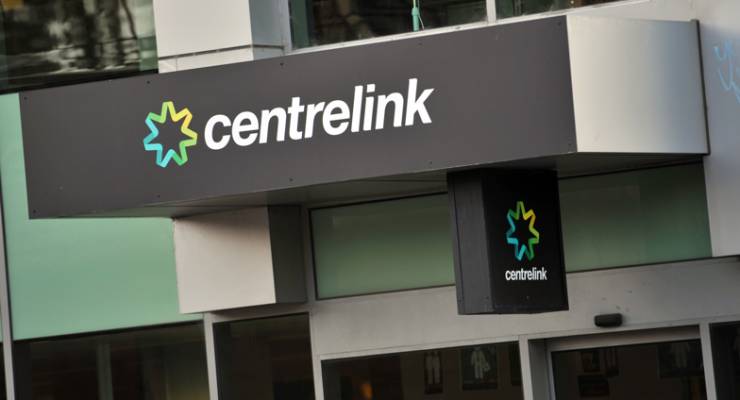
Australia’s mid-year budget update put a grin on Treasurer Scott Morrison’s face. Everyone was expecting the nation’s finances had turned ill. We thought the ratings agencies were about to descend, and place the tender neck of our triple-A rating upon the guillotine.
Instead, Morrison released a MYEFO that managed to keep deficits fairly modest and debt more or less under control.
Some of the improvement was in so-called “parameter and other variations” where the Treasury rejigs estimates of how much big programs will cost.
A number of parameter variations went ScoMo’s way on the spending side, making the budget look better by a handy $17 billion. Intriguing. Perhaps he squirrelled those updates away at a previous opportunity as insurance, perhaps he twisted Treasury’s arm, or perhaps he just got lucky.
Time will tell if those parameter variations were fact or fiction. Today, we will talk instead about a policy decision: the welfare crackdown the government took to the election. Formally known as “Better management of the social welfare system”.
Improving welfare compliance is a policy we can all support — in principle. The integrity of the system depends on payments going to the deserving, not anyone else.
But how big is the problem? For all that is written about welfare crackdowns in the popular press, they are little discussed in expert circles.
Australia has one main academic expert on the topic: Professor Tim Prenzler. I have now read his studies on the phenomenon. And they raise what might be an interesting problem for the government.
[Centrelink debt collectors target innocent people]
The $2 billion in cash the government expects to reap from its crackdown may simply not be available.
While there is not a great amount of evidence on the scale of welfare fraud, one objective measure is the rate of referrals by Centrelink to the Director of Public Prosecutions. It shows a big of decline.
Centrelink performs investigations and refers a share of them to the DPP. For a long time, according to this measure, welfare fraud appeared to remain steady. This was something of a puzzle, because Centrelink had invested a lot in prevention (texting people reminders to update their income, etc.).
Prenzler hypothesised that even though the prevention was working, data-matching technology was improving a lot so detection was also increasing. Fewer frauds were occurring but we were spotting more of them. That explained why the trend seemed steady.
Then the trend broke.
“This changed dramatically between 2009-2010 and 2012-2013, when fraud cases referred by the welfare distributor Centrelink to the public prosecutor fell by 80 per cent and the number of prosecuted and convicted individuals fell by 75 per cent,” wrote Prenzler in a 2016 paper.
The full reason for this is a bit ambiguous. Partly it is due to Centrelink focusing on smaller numbers of larger fraud cases and referring fewer people for prosecution. But another explanation is that non-compliance is not as widespread as it was, because Centrelink is successfully nipping problems in the bud.
“There was a recognition that many clients had been allowed to drift from ‘error’ into official ‘fraud’,” Prenzler wrote. “In 2011, Centrelink successfully trialled an ‘early contact’ system in which staff telephoned or messaged clients to remind them of their obligations. The focus was on reporting changes affecting eligibility, such as increased part-time employment or cohabitation.”
If non-compliance is lower than before, the government’s hopes that it can find ample spare change in the welfare system might be dashed.
The government has invested in welfare crackdowns before. In the 2015-16 budget it spent around $240 million to get an expected $1.9 billion back, for a net return of $1.7 billion. This time it is spending $650 million to get $4.35 billion. Will the trick work again when you increase the scale so much, or has the low-hanging fruit been harvested?
(The above sum yields $3.7 billion net, which is surprisingly different to the underlying cash effect of around $2 billion, but that’s government accounting for you.)
There is another sign that the $2 billion the government expects may prove elusive.
Rumours are circulating that Centrelink systems — not the finest ones in Australia, even at the best of times — are red-flagging payments collected perfectly legally.
Wollongong City Councillor Vicki Curran told Crikey her son was a sent a letter demanding an explanation of payments from 2014, on the basis of the ATO matching data.
“Brendon (my son) was not over paid by Centrelink for the few weeks he accessed sickness benefits but I bet that figure forms part of the billions they say they can receive,” she said.
“When we called Centrelink they said they had been inundated with similar calls and told me about the data/software limitations that has caused the ‘confusion’ and now thousands have to apply for reassessment of their ‘ATO basic data’ finding and to clear their name and assumed debt.”
A report by the ABC suggests a similar problem among students.
Centrelink has increased the rate at which it sends out such letters from 20,000 a year to 20,000 a week thanks to automated data-matching. An apparent drawback is that — in at least some cases — the system uses income measured annually. If a person earns for part of the year and gets Centrelink payments for part of the year, a red flag is automatically raised.
[How common are delays in Centrelink payments to asylum seekers?]
“If the employment income was earned in a period they were not receiving income support payments then they will not incur a debt,” said Department of Human Services general manager Hank Jongen.
In theory, resolving the matter is as simple as providing evidence from the weeks in question. Centrelink provides 21 days and another 21 days of extension if requested.
People who got a letter now must gather evidence that the presumption of wrongdoing is false, for example by collecting payslips from the weeks in question (which may be years ago). If they are unable to provide evidence in time, Centrelink can raise a debt.
But businesses can move and go broke. Some people, assumed by the system to have debts, will probably be unable to push back against the bureaucratic behemoth that is Centrelink.
Presumably, it will collect some of its expected $2 billion in savings from people who had, in fact, complied, and hold that up as evidence of the need for its crackdown.








Despicable of any government to wage war on the poor but this time Turnbull’s government excels itself despite abundant sources of revenue available for example in unpaid corporate taxes or the resource tax paid by only 5% of oil and gas firms – or by not going ahead with its tax cut for companies- a saving of $50 billion.
The government is great at complaining about those who may, or may not, be taking advantage of the system, yet it has been scamming pensioners for years. The Department of Social Service (DOSS) has been deliberately over estimating the income from investments achieved by many, not very wealthy, part pensioners, thus lowering their pension payments. I am aware that wealth is subjective but bear with me.
The DOSS “deems” that a certain interest rate is earned on all financial investments. Up to $49,200, they deem that 1.75% is earned – fair enough. But for amounts over that they currently deem that 3.25% is earned, even if it is not. The DOSS suggests that Term Deposits are a safe way of achieving such interest rates ( updated 22/11/16, viewed 7/12/16).
I suggest that there are no term deposits available from reputable financial organisations that come within cooee of this interest rate. As at 1pm Thursday 8 December 2016, these are the rates available for a 12 month term for amounts between ten to fifty thousand dollars.
CBA 2.25%, BOQ 2.6%, NAB 2.4%,
As you can see, what is available is a lot lower than the 3.25% deeming rate; this has been going on for years. The government is ripping off pensioners and have been doing it since deeming came to be used. Being an aged pensioner, I am not prepared to take short term, higher earning, risks with what money I have left.
I have contacted many pollies and journalist (including within Crikey) about this over the years and it is clear that nobody cares. Merry Christmas.
“Improving welfare compliance is a policy we can all support — in principle.”
Speak for yourself. Welfare compliance is basically itself welfare, for the welfare compliance officers.
Ask the Original Decision Maker to review the decision. Then go to the Authorised Review Officer. Then go to the Social Security Appeals Tribunal. Always take them as far as the Tribunal.
As yet another person affected by this debacle, I’d like to know how to obtain payslips for the periods I didn’t work at my temp job back in 2010/2011.
In fact I’ve never received a payslip for periods I didn’t work. I have all my bank statements from the period and these show when and how much (net) I was paid. These figures line up perfectly with what I declared to Centrelink fortnightly, as required. Yet I have been told by Centrelink staff that I need to obtain and produce payslips for the period, otherwise I will be indebted to them for $3,414 plus 10%. Something here stinks really, really bad. I’m hoping the review into this fiasco announced today by the Federal Ombudsman gets this sorted out before Centrelink starts deducting my erroneous debt from my pension.